Tom Petty
Jennifer Flaten
Tom Petty, the vanilla pop rock star. Might you notice him, at the mall? His blonde hair and nasal southern accent make him as likely to be Charlie T. Wilbury III, or Muddy Wilbury as a music megastar.
Low on the radar or not, Petty is the archetype US pop rock star. The penultimate pop and rock technician, he's doesn't make a big deal of his fame. Petty's the aw-shucks type and worth $100 million dollars.
His string of hits, with "The Heartbreakers" and "The Travelling Wilburys," assure his lasting fame. Duets, with Stephanie Nicks and Bob Dylan, keep his name alive. The song lyrics he wrote, such as "Free Fallin'" and "I Won't Back Down," keep his fame intact.
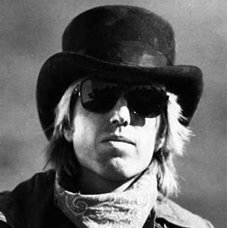

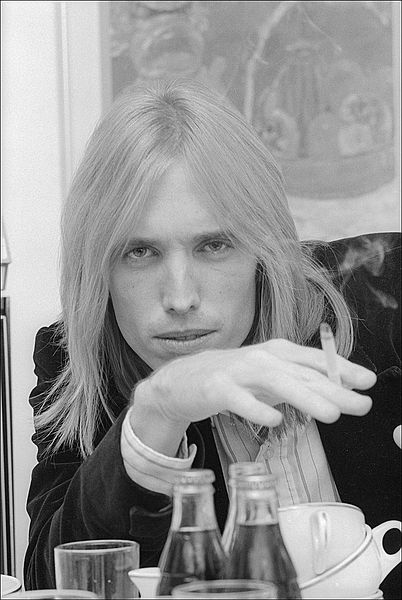
Born on 20 October 1950, the soft-spoken Petty grew up in Gainesville, Florida. A typical American boy, his father sold insurance and mom kept house. His life changed, in the summer of 1961, when he met Elvis Presley.
An uncle worked as a stagehand on the set of "Follow that Dream." The 1962 movie, starring Elvis Presley, filmed in Ocala, Florida, not far from the Petty home. After the ten year-old Petty met the 26 year-old Presley, he traded his slingshot for music.
"When I met Elvis," Petty told Mike Sager, of "Esquire," "we didn't ... have a conversation." My uncle introduced me to Presley, who grunted my way and kept moving."
"[Presley] was astounding, even spiritual. It was a procession in church: a line of white Cadillac [cars] and mohair suits ... pompadours so black, they were blue. Elvis didn't look real; he glowed."
"Descriptions of pop icons often take on religious overtones," says Kathleen Riddle, who studies the cult of celebrity. "It's not usual for fans that get close, physically, to a celebrity, to say the celebrity glowed or had other special qualities. Accounts of the life of Saints often report the same qualities we ascribe to celebrities, today. Such contact can change your life."
This was the Petty experience. The energy of the crowd impressed him, too. "What stays with me," Petty told Sager, "is the whole scene.
"I had never seen a mob before. The energy of the crowd is insane. I was young, 10, and impressionable. It's the biggest jolt of adrenaline and hard to explain."
"The next day, I went looking for Presley records. The music mesmerized me. It was magical," Petty told Peter Bogdanovich, for the 2006 documentary, "Tom Petty and the Heartbreakers: running down a dream."
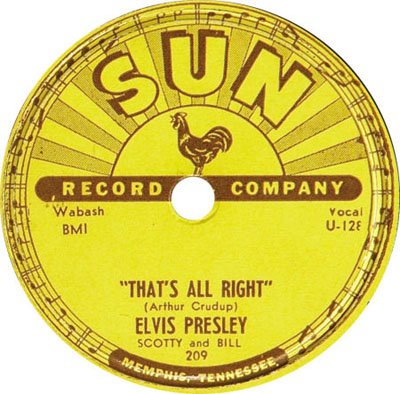
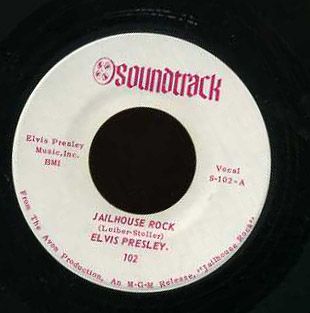
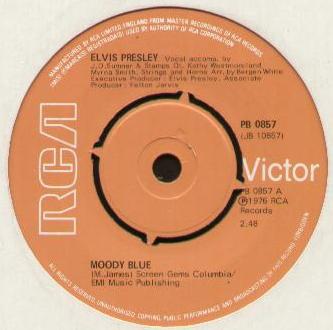
A few years later, Petty told Terry Gross, of "Fresh Air," on National Public Radio, "When I saw 'The Beatles,' on the 'Ed Sullivan Show,' I knew I wanted to be in a band. That was 1964."
"In 24 hours, after seeing "The Beatles," on Sullivan, everything changed, everything fell into place," Petty told Bogdanovich. "I wouldn't shut up about wanting a guitar. My father put down $35, for a guitar."
Tom signed up for guitar lessons. His first teacher was Don Felder. Felder wrote the music for "Hotel California," while a member of "The Eagles." His guitar duos, with Joe Walsh, highlighted every performance by "The Eagles."
During high school, Petty explored music; developed his musical skills and formed, "The Sundowners." "I wanted a band and nothing else counted," says Petty. "Finally, I found four fellows who felt the same way. We met, one afternoon, at my place. We all plugged into the same amplifier and made music. It was the greatest feeling.
"A few weeks later, we played at a high school event. We played our three songs. Everyone yelled for more. We played the same three songs again. That's how it began."
Then Petty formed "The Epics." A cover band that played the hits, their business card read, "The Epics" [performing] "for love or money." The band worked steady, in the Gainesville area. Once the band starting making money, the Petty family thought Tom had taken to stealing. There are those who don't believe entertainers are paid.

"The Epics"
Thinking "The Epics" wasn't much of a name, they became "Mudcrutch." In 1967, Petty left school for "Mudcrutch," full-time. Mike Campbell and Benmont Tench, original members of "The Heartbreakers," were also in "Mudcrutch."
On 1 April 1974, "Mudcrutch," including the newly married Petty, set out for Los Angeles. A recording deal, with London Records, awaited them. On the way to LA, they stopped in Tulsa, Oklahoma.
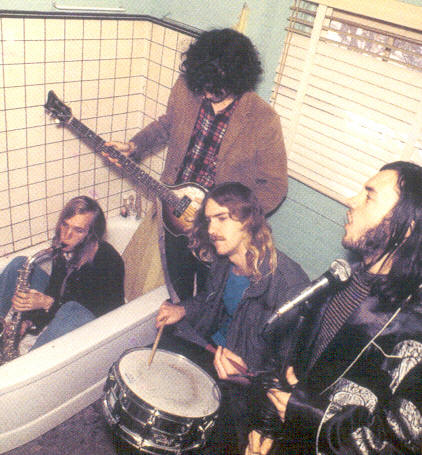
"Mudcrutch," 1970
In Tulsa, "Mudcrutch" met Danny Cordell. He, with Leon Russell, owned Shelter Records. They had a deal with ABC Records, too.
The recording industry is a maze. ABC Records helped fund Shelter Records. In return, ABC received distribution rights to Shelter recordings. There's more profit in distributing than creating.
After hearing a demo tape, a few weeks earlier, Cordell believed "Mudcrutch" was a 24-karat rock band. While on sojourn, in Tulsa, Cordell signed "Mudcrutch." He advanced them enough money to live in Hollywood for a while.
London Records hadn't signed nor advanced "any money to Mudcrutch." The deal was verbal, "Come to Los Angles," said an executive at London Records, "and we'll sign you, when you're here." Cordell offered a dotted line, on which "Mudcrutch" could sign, and cash in hand.
On Shelter Records, "Mudcrutch" had a few singles, including "Depot Street," "I Can't Fight It," "Wild Eyes" and "Cry to Me." These records, in a way, remain solid, if basic, rock. Still, as Petty says, "'Mudcrutch' was a big flop."
"Mudcrutch" broke up. Its records were not selling; more recording was unlikely to improve the sound. As Cordell says, "There were weak links, in the band, which held it back."
Cordell pushed for Petty as a solo act. Tom disagreed. He drifted through lesser bands, in LA, for several years.
In 1975, Mike Campbell and Benmont Tench were in an LA-based band, "The Drunks," with Ron Blair and Stan Lynch. Blair and Lynch had also migrated from Gainesville, Florida, to LA. In a manner, "The Drunks" were a Gainesville band.
Petty liked the sound. He told Bogdanovich, "My first thought, when I heard "The Drunks," was I want to steal this band for me. When they took a break, I made my pitch."
Although he hadn't recorded, Petty remained contracted to Shelter Records. This was the essence of his pitch to "The Drunks," we have a contract. After some negotiations, a name change, to "Tom Petty and the Heartbreakers," the deal sealed.
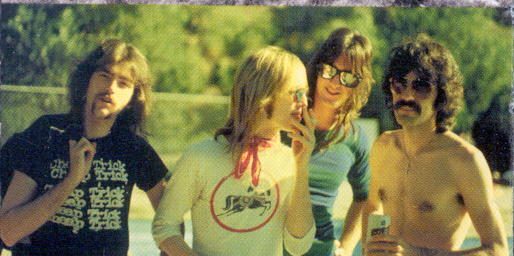
"The Heartbreakers," 1976
Their first album released in 1976. The eponymously titled album flopped, in the USA, but was a hit in the UK. Dave Stewart, of the "Eurhythmics," told Bogdanovich, "Petty was the only legitimate American band in the UK, in the middle 1970s."
The UK success led to a tour, in 1977, opening for Nils Lofgren. Spurred by the UK reaction, Shelter Records gave the album, "Tom Petty and the Heartbreakers," a hard push in the USA, releasing two singles, "Breakdown" and "American Girl."
The music of Tom Petty, according to "Rolling Stone" magazine, "[is] a distillate of FM radio Sixties rock, chiming Byrds guitars, Rolling Stones rhythms, and a slurred version of Bob Dylan or Roger McGuinn vocals." The pedantic quote, from a mechanistic biography, is long on fact and short on point: Petty is genuine.
"If you're phony," he told Sager, "[audiences] feel it in the farthest row of the arena. You have to care; you have to make yourself care. I remember John Lennon saying, "Sid Vicious died for what? So we might rock?" You have to keep that in perspective. At the end of the day, they're just phonograph records."
A second album, "You're Gonna Get It," released in 1978. The album was a critical and sales success. Two hit-singles came from this album, "I Need to Know" and "Listen to Her Heart."
Poised for stardom, Petty ran into unforeseeable problems. Shelter Records, now owned by ABC Records, sold to MCA Records. MCA declined to renegotiate his deal.
After legal scrambling, MCA gave Petty his own label, Backstreet Records, which released "Damn the Torpedoes." From dark comes light. This was the breakthrough album for "Tom Petty and the Heartbreakers."
"Damn ..." was also a critical success. More than two million copies, of the album, sold and it spent seven weeks in second place on the "Billboard Top 200." Two iconic pop songs, "Don't Do Me Like That" and "Refugee," culled from the album.
His pop-music status confirmed Petty readied another album, "Hard Promises." MCA, the distributor of the Petty label, Backstreet Records, wanted to list the album at $9.98, an unheard-of high price, in 1981. Petty refused to deliver "Hard Promises," unless MCA reduced the list price.
MCA claimed a sales slump. "The industry," Petty told Bogdanovich, "wanted to raise the list price of all records, on our back. I wasn't going to let that happen."
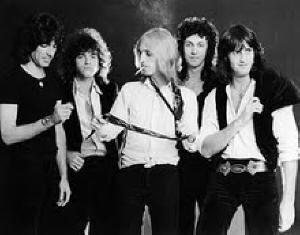
"The Heartbreakers," 1980
Petty took a stand that few dared, in 1981. After much negotiating, MCA reduced the list price, of 'Hard Promises," to $8.98. Still high, the reduced price indicated a clear win for Petty. This win cemented his place in the pop-music business.
Critics raved about "Hard Promises." It went platinum, quickly. The Petty duet, with Stephanie Nicks, "Insider," got much radio airplay. He recorded another duet, with Nicks, "Stop Draggin' My Heart Around," for her album, "Bella Donna."
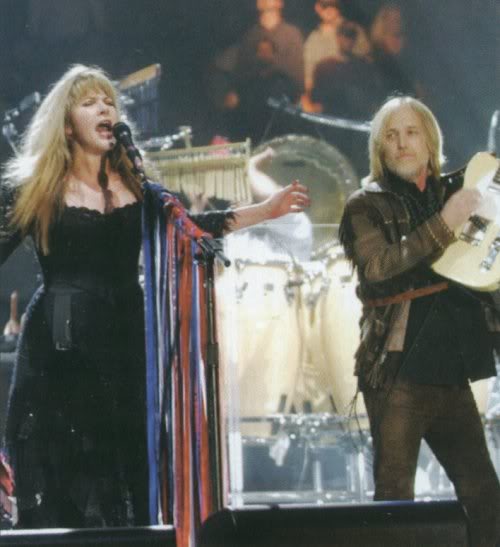
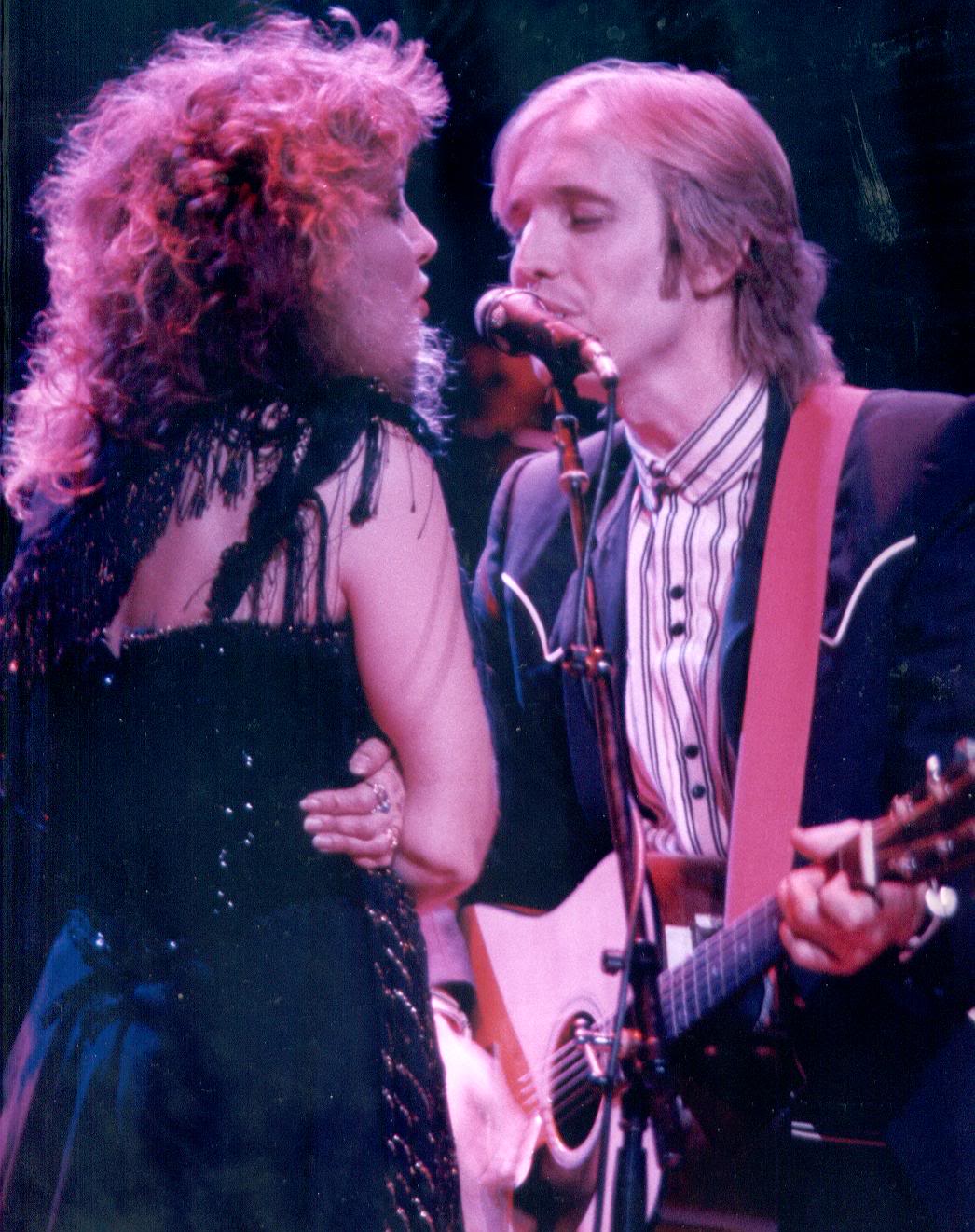
Stephanie Nicks and Tom Petty
Another year, another album released. In 1982, "Long After Dark" became the fifth hit album for "Tom Petty and the Heartbreakers." Before recording "Long," bass player, Ron Blair, left the band, replaced by Howie Epstein.
At the time, Petty was producing rock legend, Del Shannon. Epstein played bass and ran the band for Shannon. On loan, to record "Long," Epstein impressed Petty, who stole him from Del Shannon. "Del got over it," says Petty, "well, sort of."
"Tom Petty and the Heartbreakers" enthusiastically joined the line-up for "Live Aid," an 18-hour charity concert stunned the world, in 1985. The event involved several overlapping concerts. The major shows were at Wembley Stadium, in London, and JFK Stadium, in Philadelphia. Four hundred million people, in sixty countries watched the concerts on television. Almost 200,000 were in live attendance.
Phil Collins opened "Live Aid," at Wembley. He then took a Concorde flight to Philadelphia to end the American part, as drummer for Paul McCartney. The shows collected about $150,000 GBP for aid to Ethiopia.
Those shows revealed the charity potential of pop and rock music, but few serious efforts to use this potential followed and the question is why. Petty told Sager, in 2006, "There used to be this strong sense of community integrity in rock. It eroded. Everyone seems to be on their own now."
"Southern Accents," the follow-up album to "Long After Dark," took three years to record. Dave Stewart, of the "Eurhythmics," produced the album. Recording the album was painful; Petty broke his hand, punching the wall, during a stressful mixing session.
Yes, another critical and sales success, "Southern Accents" spawned more single hits. "Don't Come Around Here No More." This song revealed a new lyrical maturity, for Petty.
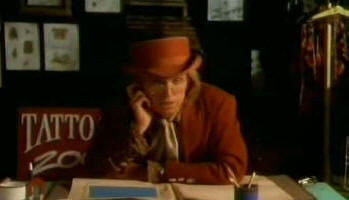 Petty as Mad Hater, in "Don't Come Around Here No More" video
Petty as Mad Hater, in "Don't Come Around Here No More" video
"Don't ..." inspired an unusual music video. Tom portrays the Mad Hatter, who eats an Alice cake. The video airs often, twenty-five years later, and remains bizarre.
A 1985 tour, to support "Southern Accents," led to a live album, "Pack Up the Plantation Live!" In 1986, "Tom Petty and the Heartbreakers" joined Bob Dylan for his "True Confessions" tour. During the tour, Petty and Dylan co-wrote 'Jammin' Me," which was a hit single from the next Petty album, "Let Me Up (I've Had Enough)."
During this time, Petty and Campbell worked with Roy Orbison, on his album, "Mystery Girl." They also co-wrote "The Boys of Summer," with Don Henley. Petty and Lynch contributed to the Don Henley album, "The End of Innocence," too.
"Tom Petty and the Heartbreakers" toured with the "Grateful Dead," in 1986 and 1987! After touring, with the "Dead," Petty expressed displeasure, with a tire company commercial, using music that carried the impression he approved the product. The company removed the questionable music from its commercial.
In 1989, Petty threatened to cancel a concert, in New Jersey. Greenpeace, the environmental activist organization, hoped to place a booth, in the area. At first, the arena declined to allow the booth, but Petty prevailed. The show went on, with Greenpeace in the lobby.
Jeff Lynne, of "ELO" and "The Travelling Wilburys," produced a solo album for Petty, "Full Moon Fever." Although called solo, "The Heartbreakers" played on the album. Once released, the album resulted in three hit singles: "I Won't Back Down," "Free Fallin'" and "Runnin' Down a Dream."
"'Free Fallin' is a good song," Petty told Mike Sager. "Maybe it would be one of my favourites, if it hadn't become this huge anthem. I'm grateful that people like it."
Warner originally rejected "Full Moon Fever." "When [Warner] rejected "Full Moon Fever," Petty says, "I was hurt so bad. I was far along in my career. I'd never had anything rejected. I'd never even had a comment. When that happened, it was just a board to the forehead.
"Then, finally, I picked myself up. I said, 'I'm not buying this, there's nothing wrong. I really like this record.'
"I waited until the top regime at [Warner] changed. I came back. I played the same record. [The new managers] were overjoyed. It turned out to be a huge hit."
"The Travelling Wilburys," a late 1980s super-group, formed to record the B-side for a George Harrison single, "This is Love." George Harrison and Jeff Lynne talked about the group over diner, with Roy Orbison. They would record in the home studio, of Bob Dylan, in Malibu. While retrieving a guitar, from the home of Tom Petty, Harrison suggested Petty join the recording session. It's who you know and where you are that count.
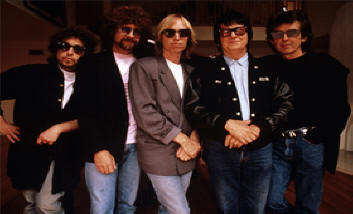
"The Travelling Wilburys," in 1998
Dylan, Lynne, Petty, Orbison, Harrison
The first "Wilburys" album, "Travelling Wilburys Volume 1," released 18 October 1988. The "Wilbury" joke had band members writing and performing under pseudonyms, all sons of Charles Truscott Wilbury and half-brothers. Orbison passed away six weeks later.
In 1990, a less successful, "Travelling Wilburys Volume 3," released. The title credits to 'George being George," says Lynn. "There was no volume two."
"Into the Great Wide Open" released in 1991. The album resulted in several hit singles, including "Learning to Fly" and "Into the Great Wide Open." The video for "Into the Great Wide Open" features cameos by Johnny Depp, Gabrielle Anwar, Faye Dunaway and Matt LeBlanc.
More business problems plagued Petty. He signed a six-album contract, with Warner, while he owed MCA two albums. Petty told few about the overlapping contracts.
His dislike for MCA went back a decade. When MCA bought Shelter Records, in 1979, Petty felt betrayed, Like groceries," he says. What infuriated Petty was the infamous "recoup" clause, in his contracts.
Recoup ensures a recording company or label gets its money back. The label pays all the costs of a new album: studio time, pressing, meals, promotional tours and such. Add interest and service fees, to the charges, and the bill soars.
The artist receives royalties after and if the label recoups. It's common for a band that breaks up, after one hit record, to owe the label tens-of-thousands of dollars, now unrecoupable from sales. Band members may spend years working at the post office to pay-off the record company.
When songwriters sign publishing contracts, they often sign away all rights to their music. When signing, cash is often most important, as it was for many Black acts, in 1950s. The thrill, of signing a publishing contract and the desperate need for money distracts from practical matters, such as long-term royalties.
When Shelter Records sold to MCA, it trapped Petty. He had sold-off his rights and owed recoup. When he tried to void his contracts, he met an immovable object. He sued MCA, although advised he didn't have the money to face off against the company.
To void his contracts, Petty declared bankruptcy. The band launched the "Lawsuit Tour," to pay the legal bills. At the last moment, MCA twitched and Petty won.
"What we got," Petty told Bogdanovich, in 2006, "was our own label, Backstreet Records. We could cut our deals, record who or what we wanted. MCA asked distribution rights to our albums and no more."
The last album for Backstreet was a greatest hits compilation. It included two new songs, "Mary Jane's Last Dance and "Something in the Air." Stan Lynch left "The Heartbreakers," after this album, to focus on writing and producing "The Eagles," Leonard Cohen and Don Henley, among others.
"Mary Jane's Last Dance," won Petty Best Male Video, at the 1994 MTV Video Music Awards. He also received the Video Vanguard Award, which recognized his contributions to music and music videos. Intangible rewards are often the most appreciated.
The greatest hits album, for MCA, sold ten million copies, but Petty focused on the departure of Lynch, "He slipped away, right after the last session, without saying goodbye," says Petty. Lynch, it seems, didn't care for Petty signing with Warner before the MCA deal completed.
The first release, for Warner, in 1994, was "Wildflower." Billed as a solo album, it resulted in two more hit singles, "You Don't Know How It Feels" and "You Wreck Me." Sales, of "Wildflower," approached three million, in the USA and Canada. The Disney Channel aired a Tom Petty special called, "Going Home," in 1994.
Petty was the first major artist to make concert tickets available by television. Before the general offering, of tickets to a Petty concert, VH-1, the music video channel, offered an exclusive to its viewers. Ticketmaster reported 500,000 callers tried to take advantage of the VH-1 offer.
"Tom Petty and the Heartbreakers" performed the soundtrack for "She's the One," a 1996 movie written, directed and starring Edward Burns. The band performed on "Unchained," the best of many Johnny Cash albums. In return, Cash covered, "I Won't Back Down," on his next album, "American III: solitary man."
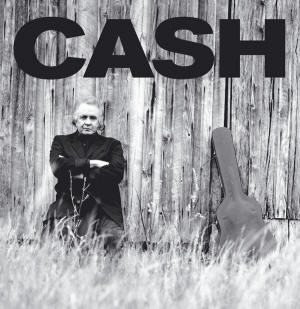
After hearing the Cash version, of "I Won't Back Down," Petty said, "I wished I'd never recorded that song. Cash [sang] it better than anyone did. I'm glad I wrote it, though."
In 1996, Petty joined music legends, such as Ray Charles and Ella Fitzgerald, when he received the George and Ira Gershwin Award for Lifetime Musical Achievement. "I may not own any George and Ira Gershwin records," said Petty, "but I'm honored to be here. I want to thank my fans for showing up at my concerts from time to time."
Petty won the Golden Note Award, from the American Society of Composers, Authors and Publishers (ASCAP). This award recognized his songwriting skills. At the Grammys, he won Best Male Rock Vocal Performance for "You Don't Know How It Feels." "Wildflowers," made the final list for Best Rock Album, winning for Best Engineered Album (Non-Classical). At the 1995 MTV Video Music Awards, "You Don't Know How It Feels," for Best Male Video.
Petty worked, for years, with Rick Rubin. "Echo," the 1999 album, ended was their last collaboration. The album produced two hit singles "Room at the Top" and "Free Girl Now." After the release, of "Echo," "Tom Petty and the Heartbreakers" received a star on the Hollywood Walk of Fame, for their contributions to the recording industry.
"The Last DJ," a solo album, in 2002, was a departure. The song lyrics attacked or commentated on the state of the music industry and radio. Petty felt the industry was watering down the music, greedy and only releasing mainstream pop music sung by sexy young women.
What else is new? "The Last DJ" was a Top 10 album, on the "Billboard Hot 200" chart. Its ranking was mostly for sales during the first week.
Many radio stations declined to pay the album. The title track, of "The Last DJ," was especially controversial for radio. Music directors (sic) thought the song insulting, if all too true, and didn't air it.
"The Last DJ" sold half a million copies, mostly on the expectations of early buyers. Still, the Rock and Roll Hall of Fame, in Cincinnati, Ohio, inducted "Tom Petty and the Heartbreakers," later in 2002.
During 2005, Petty became a DJ, for a while, hosting a weekly show on Sirius Radio. The show, "Buried Treasure," featured music from the Petty Collection: no Gershwin, but much Roger McGuinn. On 6 December 2005, Petty received the Billboard Century Award for lifetime achievements.
Petty won all the over-the-hill awards. What did he have left to do? Music for sports broadcasts. Petty created a soundtrack for the 2006 NBA Play-offs and appeared at the 2008 Super Bowl.
In 2006, Paul Zollo released an oral history of Petty. Zollo used taped interviews, from 2004 and 2005, for the project. Petty gives few interviews and allows taping of fewer, which makes the Zollo oral history even more important.
"Tom Petty and the Heartbreakers" continued to tour and sell out each show. Petty released a solo album, "Highway Companion." A single, from the album, "Saving Grace," debuted on the "Billboard Hot 100" at number 4, a major feat for a 56-year-old singer.
A documentary film, on the life of Tom Petty premiered at the New York Film Festival, on 14 October 2007. "Mudcrutch" reunited and released an epinomous titled album, which sold well.
Petty had cameo roles in several movies, including "FM" (1978) and "Made in Heaven" (1987). He portrayed himself on "Its Garry Shandling's Show" and made several guest appearances on "The Larry Sanders Show." Petty was the "Mayor," in the Kevin Cosner movie, "The Postman." He appeared on self-spoofing episode of "The Simpsons." He does voice-overs on "King of the Hill."
Unlike too many stars, Petty has preserved a lasting and sane family life. His first marriage, to Jane Benyo, lasted twenty-two years. They have two daughters.
Adria Petty, the film director, premiered her newest movie, "Paris, Not France," at the 2008 Toronto Film Festival. The 20-minute movie focuses on Paris Hilton. It's influenced by "Truth or Dare," "Darling," which starred Julie Christie, and the French New Wave. Asked how these influence fit, Adria says, "I like movies that are well planned, like Hitchcock and Fritz Lang, and people who developed tight scripts and story boards and camera effects."

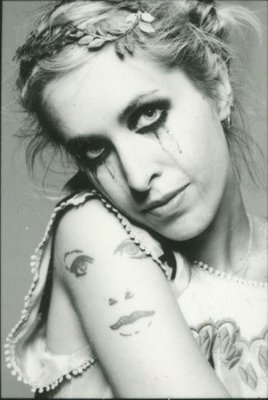
Adria Petty, left, and AnnaKim Violette
Daughter number two is AnnaKim Violette, the artist. As Chelsea Girl writes, AnnaKim Violette "has such cool pictures she takes, of her, all costumed up. I love all the colours she uses in her home and clothing. [She] reminds me of John Galliano."
Tom Petty met his second wife, Dana York, at one of his concerts. They married in 2001.
As is the case among many successful sons, relations between Petty father and son strain. His father never accepted the fact his son is a gentle soul, more interested in music than selling insurance. "Today," says Petty, "he willingly accepts my success and what it means to him, in Gainesville, to be the father of Tom Petty."
Tom was close to his mother, who passed away in 1981, and his older brother, Bruce.
Most exceptional, from an industry point, is Tony Dimitriades has managed Tom Petty, since 1976. Many entertainers change managers as they change shirts. The loyalty of Petty harks back to vaudeville or the early days of radio, when stars, such as Jack Benny or George Burns, stayed with the same manager for a lifetime, not only a career.
"I couldn't exist nowadays," Petty told Mike Sager, for the "Esquire" interview. "I could never have built a career like I [did], if I were just starting out now. Radio doesn't take chances ... anymore; [playlists are] streamlined to the lowest common denominator. It's ... silly that they think people would rather hear "Stairway to Heaven," one more time, than a new song.
"As you're coming up, you're recognized song for a song or an album. What's changed ... is that the man who approaches me on the street is more or less thanking me for a body of work - the soundtrack to his life, as many say. That's a wonderful feeling. It's all an artist can ask."
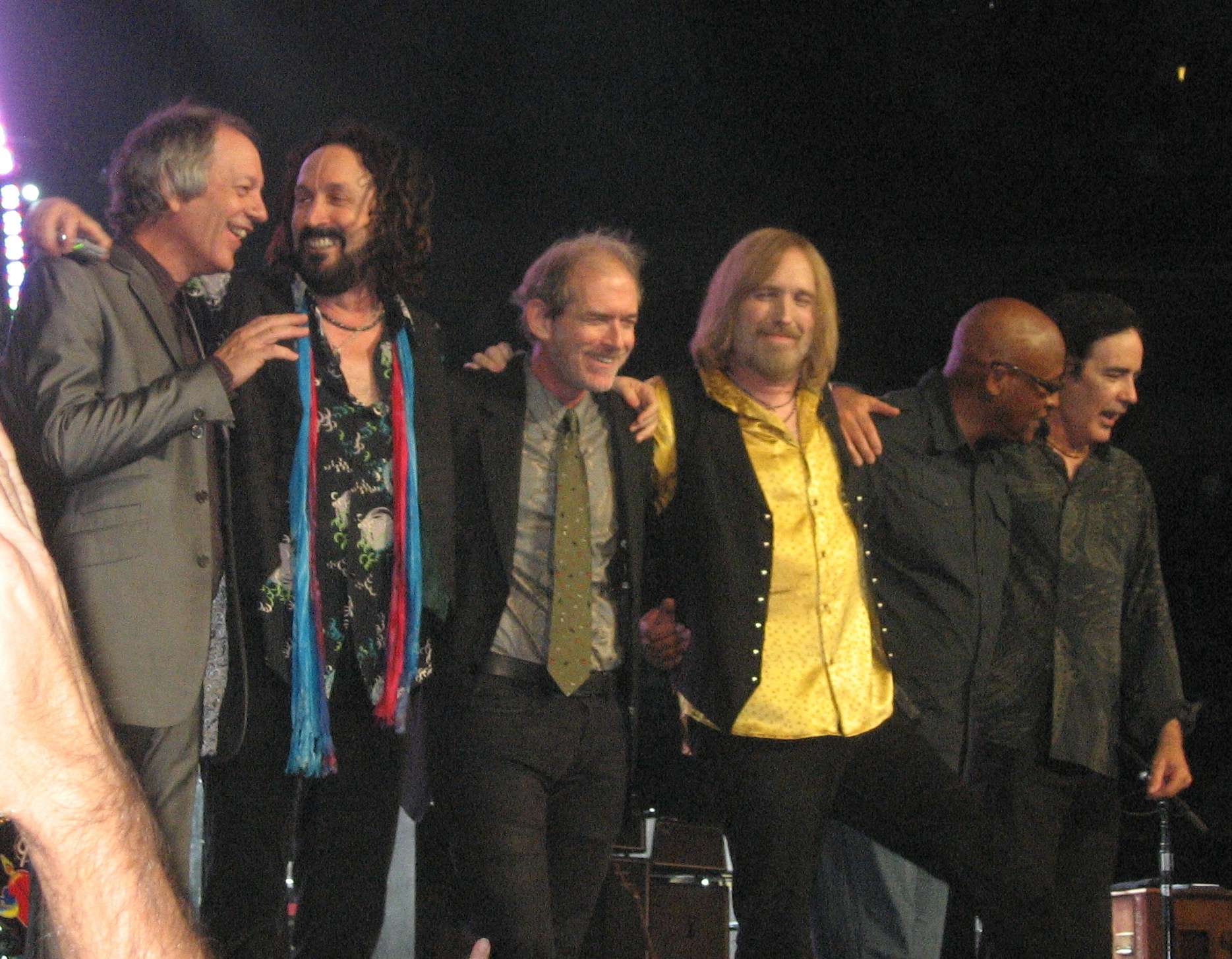
Scott Thurston, Mike Campbell, Benmont Tench, Petty,
Steve Ferrone and Ron Blair about 2006
The goal, of this profile was to shed new light on Petty, if only by reexamining at his body of work and life. This goal goes wanting. Petty remains a megastar, whose success, in many ways, baffles.
"The Heartbreakers" are a forceful band, no doubt; better than most. Petty, alone or as co-author, writes noteworthy music. "Free Fallin'" and "I Won't Back Down" are pop rock at its penultimate best, if meanest, as is "The Boys of Summer."
What baffles is Petty. He's clearly outstanding at what he does, passionate about music and performing. Yet, bet that he buys vanilla ice cream, at "Ben and Jerry's," not Neapolitan.
The fuel that drives petty, beyond wanting to work and make music, remains cloaked. Need, anger and disappointment often drive success. These are worth a thought or three.
Petty grew up in a middle-class home and has one brother, Bruce. His father sold insurance. From the family film footage, used in the documentary, "Running Down a Dream," his childhood needs seem fulfilled; his artistic wants able to soar, early in life.
Still waters run deep. The calm surface, of Petty, may hide deeply rooted anger. An MTV executive, interviewed for "Runnin' Down a Dream," said as much, without detail.
Bruce Petty talks about how Tom and his father fought. Tom claims his father resented his artistic leanings. Bruce described how he broke up fistfights between Tom and his father.
Tom Petty, not the mild-manner rock super-star he presents. Still, there are few rumours, about "The Heartbreakers," wrecking hotel suites or driving under the influence. No, this band seems sane and thus bland.
"I Won't Back Down" is an obvious missive from son to father. "You could stand me up at the gates of hell, but I won't back down." The message is basic Freud and honest.
He insists a father and son reunion is unlikely. "Today," says Petty, "he likes being the father of Tom Petty, but he didn't support my early efforts. Yes, he bought my first guitar, but that was to shut me up." Ceasefire and an impasse are an ideal compromise when two sides of a coin are warring.
It's hard to imagine his body of work as the result of paternal angst. A few lyrics or violent rhythms, here and there, yes, but a body of work so fuelled isn't likely. If true, Tom Petty is indeed petty; the extant evidence about him implies the opposite.
As for disappointments, Petty had a few. The first refusal by Warner to release "Full Moon Fever," in 1991, was a blow. "Learning to Fly" deals with the struggle to win. "Well, I started out down a dirty road. Started out all alone, and the sun went down, as I crossed the hill, and the town lit up, the world got still. I'm learning to fly, but I ain't got wings. Coming down is the hardest thing."
"Learning to Fly" seems a substance abuse lyric, but may be much more. Stephanie Nicks uses the same metaphor for "Rhiannon," a song about sexual beginnings. What Petty learned was smart and simple patience. Wait for an executive churn at Warner and then reoffer "Full Moon Fever."
"Learning to Fly" released in 1991. Baby boomers were falling toward middle age; most had to learn new ways to live. Many experienced divorce, in their early thirties, having married too young. They needed to learn about courtship, again, and "Learning to Fly" spoke to these experiences, too.
Petty divorced, in 1999, after twenty-two years of marriage. It threw him for a loop. Early rumblings, of marital problems surely influenced his writing.
"Free Fallin'" comments on gender and courtship; it may reflect those early rumblings. "She's a good girl, loves her mama; loves Jesus and America, too. She's a good girl, crazy about Elvis. I'm a bad boy, 'cause I don't even miss her. I'm a bad boy for breaking her heart." The sentiment is archetype rock: men matter and women don't.
Stability always helps explain entertainment success. The longer a radio station DJ line-up remains the same, the more successful the station. Listeners like to know what to expect, when they turn on the radio: the most stable DJ lineup is the best guess.
The same idea works for "Tom Petty and The Heartbreakers." Mike Campbell, Benmont Tench and Petty have worked together more than 35 years. Bassist, Ron Blair, left "The Heartbreakers," in 1981, after five years. He returned in 2002, when Howie Epstein, his replacement, was unable to continue, after 21 years.
Petty says, "We wouldn't audition for a new bass player, when Howie left. We would've thrown in the towel, if it weren't for Ron."
Finally, Tony Dimitriades has managed Petty since 1976. "Tom Petty and the Heartbreakers," the organization, seems a long-term marriage not grown stale. Serial stability is the term for how this band conducts business and life.
Petty knows how to pick producers and when to change producers. Jimmy Iovine and Rick Rubin each produced three Petty albums. Jeff Lynne, of "ELO" and "The Travelling Wilburys," produced "Full Moon Fever." Dave Stewart also produced one album for Petty. "Producing our own records," Petty told Bogdanovich, "was not a good experience."
Petty music videos led the way for the MTV generation. Most innovative, of his videos, are "Don't Come Around Here No More," "Mary Jane's Last Dance," and "King of the Hill," with Roger McGuinn. The imaginative music videos, by Petty, set a high standard.
Many composers create music that grabs listeners. Bernie Taupin, who writes with Elton John, and Bob Dylan are most adept at grabbing ears. Taupin makes you listen and Dylan makes you think.
Petty has a different take on the effects of his work. He takes the most pride in his body of work. He takes pride in how he wrote and recorded the soundtrack of lives.
Petty has a notable body of work. He earned the right to stand among Orbison, Harrison and Lynn; Dylan stands mostly alone, with Taupin and, in a stretch, Bruce Springsteen, who's less consistent. Here is the key to the success of Tom Petty.
Petty is a matchless, tenacious technician. He's akin to Mario Lemieux, the hockey player; few played hockey, with such expertise and precision, as Lemieux. Yet, Lemieux didn't change the game of hockey. Bobby Orr changed hockey, as Dylan and Taupin changed pop rock music, and there's the rub.
Bob Dylan changed pop song lyrics. He add an intellectual facet to "June, Moon, Spoon." His muses were 19th century poets.
Taupin captures the moment better than does anyone. In 1971, the role of women was changing; old images blended into new honesty. Taupin recognized the paradox: "Blue-jean baby, LA lady; seamstress for the band."
The muse for Petty is his heart and he's not alone. He writes and performs from the heart, thus his depth of passion. Heart and passion, with technical precision, Petty doesn't strive for the profound, but for the accessible: listeners get his lyrics, whereas those of Dylan or Taupin may go wanting.
A good comparison for Petty is Springsteen. Lyrically and musically, both are accessible, even to the casual listener. "I Won't Back Down" is comparable with "Born to Run" and "Refugee" with "Born in the USA."
The career of Tom Petty is one of exceptional technical ability. His success is not unlike that of Johann Strauss, father and son, in the 19th century. They composed waltzes to promote performances by their ensemble.
Today, Petty tours, to promote an album; he sells out sheds and stadiums. Strauss worked a smaller scale, playing his waltzes as a few dozen men and women danced. Yet, the point is the same: if you create music, from your heart, deliver it passionately and with technical precision, they will come.
When anyone buys a ticket for a "Tom Petty and the Heartbreakers" show, she or he knows what to expect, well-written rock anthems performed by passionate musicians. When anyone buys a ticket for a Springsteen concert, he or she expects ideology. "Tom Petty and the Heartbreakers" offer A-list entertainment.
Lester Bangs, the departed rock critic, who wrote much for "Crawdaddy," ranted about the "Guess Who." "They didn't care if their albums were pop schlock," he'd scream. "Listeners like the band, buy their records and are entertained. No one cares if their 'Led Zeppelin' or not."
What Lester meant was sometimes, "everyone had a good time," counts most. "Tom Petty and the Heartbreakers" achieve this goal, at each performance. The agenda is worthy.
-----
Peter Bogdanovich (2007), "Tom Petty and the Heartbreakers: running' down a dream," produced by Sundance Channel and Alpha Dog Productions.
chelseasgirl.blogspot.com/2008/12/annakim-violette.html
Elton John and Bernie Taupin (1971), "Tiny Dancer."
Mike Sager, "What I've Learned: Tom Petty," published in "Esquire" on 30 June 2006.
Jennifer Flaten lives where the local delicacy is fried cheese, Wisconsin. She writes about family life, its amusing or not so amusing moments. "At least it's not another article on global warming," she says. Jennifer bakes a mean banana bread and admits an unusual attraction to balloon animals and cup cakes. Busy preparing for the zombie apocalypse, she stills finds time to write "As I See It," her witty, too often true column. "My urge to write," says Jennifer, "is driven by my love of cupcakes, with sprinkles on top. Who wouldn't write for cupcakes, with sprinkles," she wonders.
- To the Plungers
- Spring Break Ends
- Pop Goes the Cookie
- A Day for Mom
- Down a Nice Street
- Hooters and Kids
- Make Over
Click above to tell a friend about this article.
Recommended
- David Simmonds
- Crows and Cards
- Drink Coffee Live Longer
- An Ideal Community

- Sjef Frenken
- La Vie en Rose
- Love: a contact sport
- Sex (gotcha!)

- Jennifer Flaten
- Up-sell to Fries?
- New Clothes
- Kid Sickness

- M Alan Roberts
- A Loveless Life
- Pain Eaters
- A Drunk Loser

Recommended
- Matt Seinberg
- Air Check Disater Aftermath
- Boardwalk Empire 3
- College Costs

- Streeter Click
- Look Now, Pay Later
- Wolfman Jack on CFRA-AM
- Funny Business

Recommended
- AJ Robinson
- On Being Last
- A Bud Tender
- Setting Them Straight

- Jane Doe
- Watchman
- A New Day
- Mrs Doubtfire

- M Adam Roberts
- Paradise
- Thanks a Million
- Above and Beyond

- Ricardo Teixeira
- Monkey Business
- Harmony
- The Future




